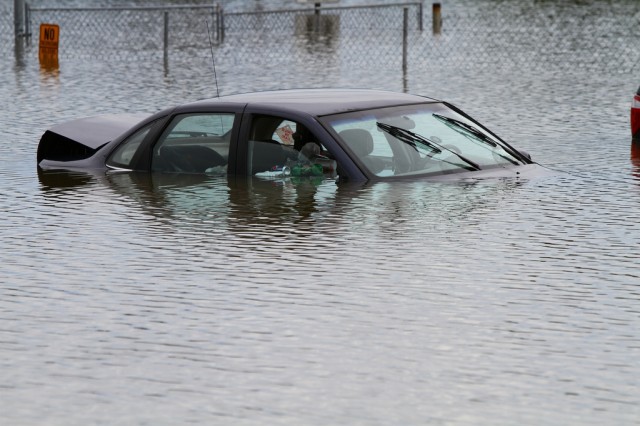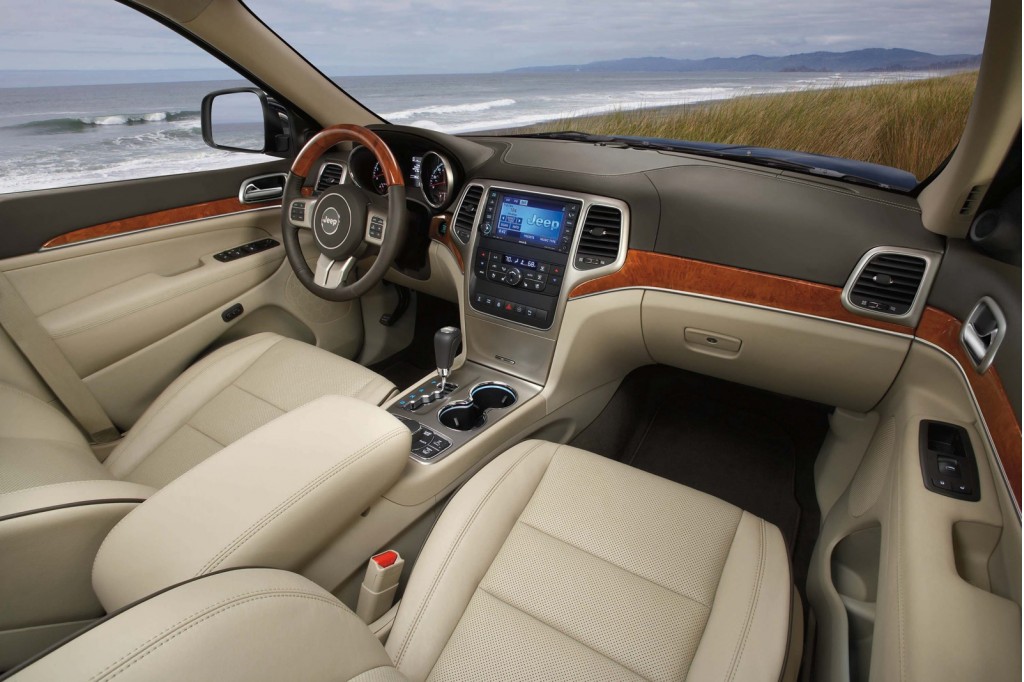How to Tell if a Car Has Been in a Flood
Many car shoppers don't realize just how much damage floodwaters do to a vehicle. That represents a problem—not just to the owner of a car or truck that falls victim to a catastrophic flood, but to prospective buyers unaware of the vehicle's history.
The risk of flooded vehicles on the market affects everyone looking for a used car, and not just those in the immediate vicinity of a flood. After Hurricanes Katrina and Sandy, for example, flooded cars popped up for sale across the country. It's a smart bet that the same will happen once the waters Hurricane Florence dumped on the Carolinas recede, too.
The best way to protect yourself from unscrupulous—or even unknowing—dealers is to educate yourself on how to spot the tell-tale signs of flood damage.

Flooded car in parking lot. Photo via Flickr user waitscm/CC2.0
Run the numbers
It sounds obvious that you should check the vehicle's history to look for repairs, but it's still an important step. Run the VIN (vehicle identification number) through Carfax, which will tell you, for free, if a car has been in a flood. If you get a positive result, you can stop with your investigation, because you don't want that car.
You can't just stop there if the car you're looking at isn't marked by Carfax, however. While dealers are required to disclose flood damage, there exist enough loopholes in the system that some cars inevitably sneak through. For example, if a car was insured at the time the flood occurred, the damage would almost definitely be reported. However, it is easier to skip the requisite reporting if repairing the car without the insurance company's oversight.
It may also be worth calling a dealership to ask about service records for the vehicle if it's a newer model. Most automakers link service records between dealerships. While privacy laws prevent dealers from giving out a previous owner's personal details, the records may indicate signs of flood damage or repair.
Check the electrical system
Check everything from electrical wiring to how well each system works. Don't use corrosion on a battery terminal as an indicator, because that's a relatively common phenomenon anyway. If you see corrosion forming on any of the other wiring on the car, however, take that as a bad sign.
Even if you don't see physical proof of corrosion, you should attempt to use every single system on the car. Start with the basics, like the radio, the turn signals, and the windshield wipers. Condensation in the headlights isn't a definite sign, but it's one more point to remember as you look over the vehicle.
Keep in mind that many electrical problems caused by floods don't manifest themselves immediately, or even consistently. A faulty brake light, for example, might only become apparent under specific circumstances.
If every single electrical item works, it's a good sign, but not yet a conclusive piece of evidence.
Carefully inspect the body for rust
Some cars may have minor rust in a few locations anyway. That's not a major warning sign in and of itself. Rather, look at the underside of the hood, inside the doors, and in the trunk. If you can, lift part of the interior carpet and look for rust on the floor, or on the bolts holding the seats down. Rust in any of these areas is a proverbial flashing red light.
And look for sand and dirt in places people don't usually clean
Look inside the wheel wells. If you can see sand and dirt gathered at a constant level, almost like a dirt ring in a filthy bathtub, you have a good reason to believe the car was sitting in flood waters. Do the same with the exhaust underneath the car.
If you can, reach underneath the car and see if there's sand on the suspension. Anywhere that water can pool is also worth investigating, such as the spare tire well in the trunk, or under the seats.

2013 Jeep Grand Cherokee
Be suspicious of an interior that's too clean
It should go without saying that if any part of the interior is wet, that's a problem. Similarly, if you see mud or sand in the trunk, or on the carpet your job is done, and the car is likely a junker. Even without mud, the cardboard lining to which the headliner is attached could warp if it's submerged. Look for anything that resembles an old textbook after a midnight coffee spill.
Many people consider a musky smell in the car to be another obvious sign, but modern detailing equipment can remove most odors. An odorless car isn't the equivalent of a clean bill of health.
Instead, look for more subtle issues, like an interior that's almost too clean. If the car was recently reupholstered, with a new headliner, carpet, or seat covers, it could be evidence of flood damage repair.
Go for a test drive
If everything checks out reasonably well, it's time to go for a test drive. Listen for anything abnormal. A grinding noise from the brakes or steering, or a squeak over bumps might not be proof of a flood on its own, but if noises start coming from multiple places, it might be time to look for a different car.
Work your way up to carefully checking more advanced things like the anti-lock braking system, which relies on sensors that won't work if their wires are corroded. The brake pedal should pulse against your foot and prevent the wheels from skidding if you operate an "emergency stop" by pressing hard on the brake pedal.
If you're unsure at all, get a pre-purchase inspection
For a modest fee, nearly every mechanic or dealership will perform what's called a pre-purchase inspection, or PPI. Having one of these performed on any car, even one you're confident hasn't spent some time underwater, is generally a good idea.
A professional mechanic has access to a lift and can more easily check every nook and cranny of the car, front to back. He or she also knows how to spot potential problems much more easily than the average person. A good mechanic can look over the car in around an hour; think of the inspection fee as peace of mind.
If you can, look for a specialist—someone who works exclusively on that brand or similar models.
How to Tell if a Car Has Been in a Flood
Source: https://www.thecarconnection.com/news/1112407_seven-ways-to-tell-if-a-used-car-has-flood-damage